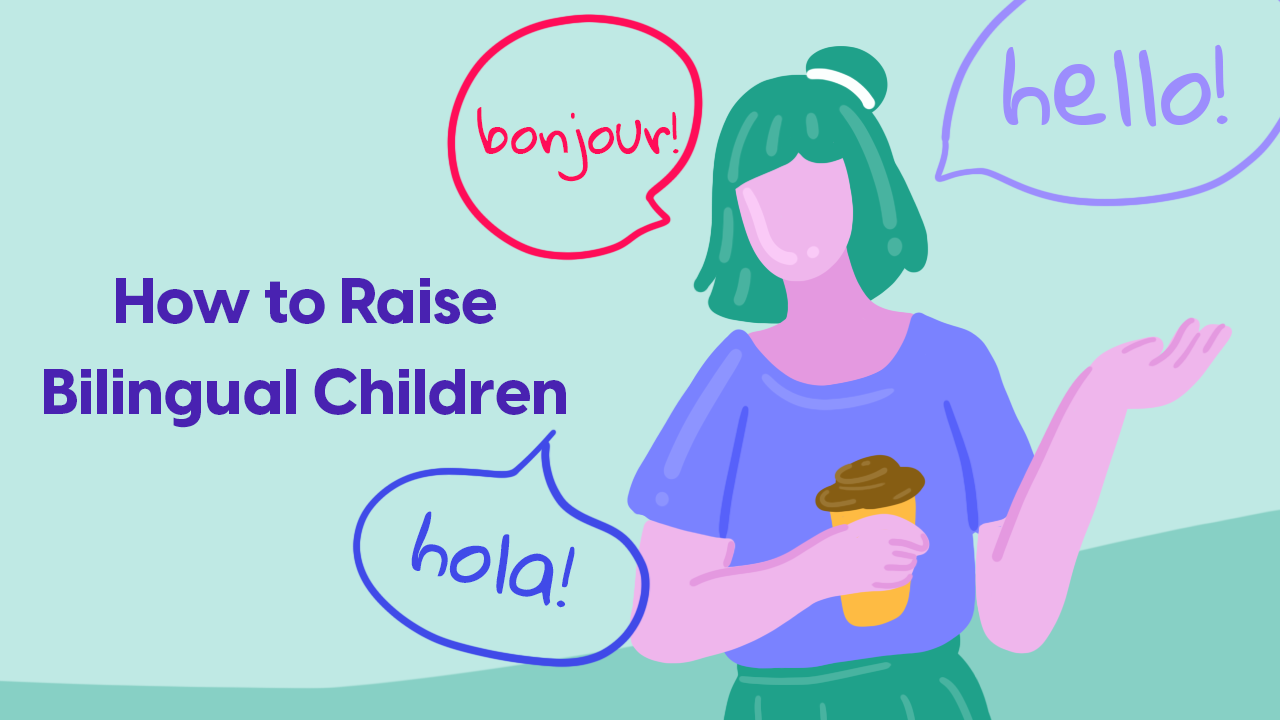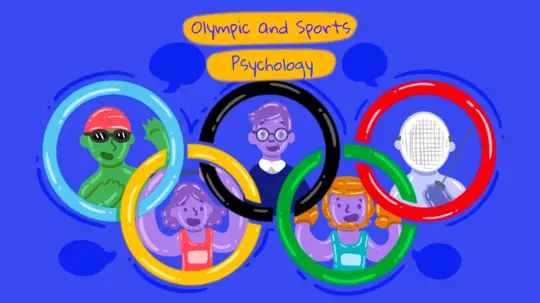
Start feeling better today!
Connect with your therapist today and take control of your life like our 850.000 happy clients.
Get StartedThe Adventure of Being Bilingual
Humans differ from other living beings in that they can communicate through different languages. Changes in language performance affect other social and cognitive skills, causing differences among people. At this point, it is possible to say that language development is a very important and distinctive process for the human mind.
So what happens when this development progresses in two different ways—that is, when the mind starts learning two different languages? Should I teach my child a second mother tongue? Should my baby grow up hearing two languages at the same time? Will my child have problems in the future if they learn two languages?
These are some of the questions that come to the minds of parents who are raising a child or preparing for a new child. Let's examine together how the language learning process works, the advantages and disadvantages of being bilingual, the myths of society on this subject, and whether these myths are true.
How to Become Bilingual
Language is a system that shapes our thoughts with sounds and words. We are exposed to language from the mother's womb, and we begin to use a language with the sounds we make during infancy. Sometimes, as a requirement of the society they live in or only with the wish of the parents, children can grow up learning two languages.
There are two basic methods commonly used by parents who want to raise a bilingual child: simultaneous bilingualism and sequential bilingualism1, 9.
Simultaneous Bilingualism vs. Sequential Bilingualism
Simultaneous bilingualism is the result of teaching two different languages to a child at the same time from birth. It is often thought that this process can be disadvantageous for the baby who is exposed to two languages, both in the family and in society.On the other hand, sequential bilingualism is a method of teaching a child the second language after the child has learned their first language. Since the child will be taught another language after the mother tongue, this method, which is more favorably perceived than simultaneous bilingualism, is mostly observed in immigrant families. For various reasons, families who start living in a different society have to learn the language of that country and teach it to their children.
Positive Bilingualism vs Negative Bilingualism
When we consider similar situations, we can see that not all bilingualism processes occur in the same way, and that there is both positive and negative bilingualism. Positive Bilingualism refers to situations in which a child learns a second language while also maintaining and using their mother tongue8.
In contrast, negative bilingualism is observed in families who have had to migrate or live as a minority in a society. In this scenario, the language spoken by the families at home and the language spoken in the community they live in are different from each other. Individuals who spend their infancy and childhood mostly speaking their mother tongue begin to learn the language of society as a second language when they reach school age and afterwards.
The point that makes the process negative is the decrease in dominance in this language over time due to the limited spaces where individuals can speak their mother tongue. When the community language is learned as a second language, a different process from positive bilingualism takes place11, 12.
In the first stage, children become dominant in their mother tongue (e.g., Kurdish, Arabic) until they start kindergarten. Starting school and studying in the community language, which is Turkish, the mother tongue and second language form a balanced kind of bilingualism.
Over time, the second language dominates both academic and social life, and the mother tongue becomes less dominant. In the last stage, the mastery of the mother tongue deteriorates, and the language learned as a second language continues to be the dominant language. If it is not spoken, the mother tongue becomes a language that individuals can understand but cannot speak fluently.
5 Ways to Raise a Bilingual Child
Unlike situations where the force of circumstances plays a big role, the advantages of this process outweigh the disadvantages for families who want to raise a bilingual child. Moreover, there are different ways to raise bilingual children that can fit into different family dynamics.

One Person, One Language Method
The most common of these is the one person, one language method, which is quite similar to simultaneous bilingualism. In this method, one parent speaks the mother tongue while the other parent speaks the second language to be taught13. In this way, the child actually learns both languages as their mother tongue. The main thing to note here is that the parents keep the language-parent matching as they start.
In-Home-Out-of-Home Method
Another method, in-home-out-of-home, has a similar process. Parents choose different languages to talk to their children when they are at home and outside. With this method, the child mostly speaks their mother tongue at home and the second language outside7.
This is a frequently used method for immigrant families and minority groups. While the child improves their mother tongue at home with family and relatives, they also improve their second language in their social life outside of the home, at school, and with their friends.
Language Time Method
In another method, the language time method, parents set aside certain times of the day or week to speak and improve the second language. While using this method, it should be kept in mind that two languages may not develop in a balanced way.
Language-First Method
In a language-first method which is quite similar to sequential bilingualism, parents teach their children a single language until they reach a certain age. Parents using this method usually wait until school age to teach the second language, and children try to adapt to the second language.
Free Change Method
In the last method, the free change method, parents use two different languages interchangeably whenever they want, without considering a rule or order.
Myths and Facts About Bilingualism

It is possible to encounter some prejudices in families who aim to make their children bilingual by using the different methods above and in the society they interact with. We often come across people who misjudge being bilingual. The most common negative view on this subject, the monolingual brain myth, argues that children will have difficulty distinguishing between two different languages, and therefore will have poor language performance.
This idea, which is referred to as the Limited Capacity Theory, also argues that children may experience language delays in the following years10. However, research shows that children learn two languages with two different language processing systems and do not confuse the languages6.
In addition, the idea that bilingual children's vocabulary will shrink does not reflect the truth. On the contrary, learning two different languages allows bilingual children to know more words than monolingual children, as they will build two different vocabulary5.
Contrary to popular belief, the brain's language learning process is quite flexible and fast. Related to this, another negative view encountered in society is that if a second language is not learned at a young age, it cannot be learned at all at later ages. While it is an undeniable fact that language learning is faster at an early age, it is clear that there is no deadline for becoming bilingual. Adults who were not brought up as bilingual can continue their lives as bilinguals by their own efforts.
The Advantages and Disadvantages of Bilingualism
Children who grow up learning two languages periodically face disadvantages that support myths in society, but they are in a cognitively advantageous position in the long run. One of the known disadvantages of being bilingual is that their narrative skills fall behind compared to monolingual children2.
Bilingual children, who cannot use two different languages with the same depth and complexity, may be considered disadvantaged until a certain age. With school life and education, this gap closes, and this disadvantage disappears in the following years. However, at the time of the emergence of first words and simple sentences, bilingual babies may lag behind compared to monolinguals. The time it takes for the mind to adjust to two different language systems may seem like a drawback, but it is actually an investment for the future.
Bilingual children, who frequently switch from one language to another, develop their ability to suppress and advance cognitively, and are particularly advantageous in terms of executive functions3. This control mechanism brings along flexible thinking, solving verbal and numerical problems more easily, and academic success in the following years4.
Because bilingual children have two different language operating systems, they are in an advantageous position to include a new system, that is, to learn a new language. In general, being bilingual may cause temporary disadvantages, but it is possible to say that it provides permanent advantages. By adding a second language to their child's mind mechanism, parents can make a lifelong change in their child's life.
Sources
- Akgül, E., Yazıcı, D., & Akman, B. (2019). Views of parents preferring to raise a bilingual child. Early Child Development and Care, 189(10), 1588-1601.
- Aktan-Erciyes, A. (2019). The effect of second language acquisition on the fictional and grammatical processes of narrative skills in preschool and school age children. Psychology Studies - Studies in Psychology. Advanced Online Publication, 1-33.
- Bialystok, E., Craik, F. I. M., Klein, R., and Viswanathan, M. (2004). Bilingualism, aging and cognitive control: Evidence from the Simon Task. Psychology and Aging, 19 (2), 290-303.
- Bialystok, E., Craik, F. I. M., and Luk, G. (2012). Bilingualism: Consequences for mind and brain. Trends in Cognitive Sciences, 16, 240–250.
- Bedore, L., Peña, E., García, M., and Cortez, C. (2005). Conceptual versus monolingual scoring: When does it make a difference? Language, Speech and Hearing Services in Schools, 36, 188–200.
- Genesee, F. (2015). Myths about early childhood bilingualism. Canadian Psychology, 56(1), 6-15.
- Grosjean, F. (2009). What parents want to know about bilingualism? The Bilingual Family Newsletter, 26:4.
- S. Grover, & M. Grover, Dü Guerrero, C. H. (2010). Elite vs. folk bilingualism: The mismatch between theories and educational and social conditions. How Journal, 17(1), 165-179.
- Hernandez, A., Li, P., & MacWhinney, B. (2005). The rivalry of competing modules in bilingualism. Trends in Cognitive Sciences, 9(5), 220-225.
- Paradis, J., Genesee, F., & Crago, M. (2011). Dual language development and disorders: A handbook on bilingualism and second language learning (2nd ed.). Baltimore, USA: Brookes.
- Varol, O. (2017). Functional And Pragmatic Differences Of Turkish {-Mış} Construction in the Utterances Of Kurdish-Turkish Bilinguals. Route Educational and Social Science Journal, 4(7), 271-284.
- Varol, O. and Rehbein, J. (2018). Turkish acquisitions of Kurdish-Turkish speaking bilingual children in Turkey. New Turkey Turkish Language Special Issue, 2(100).
- Venables, E., Eisenchlas, S. A., & Schalley, A. C. (2014). One-parent-one-language (OPOL) families: is the majority language-speaking parent instrumental in the minority language development?. International Journal of Bilingual Education and Bilingualism, 17(4), 429-448.





